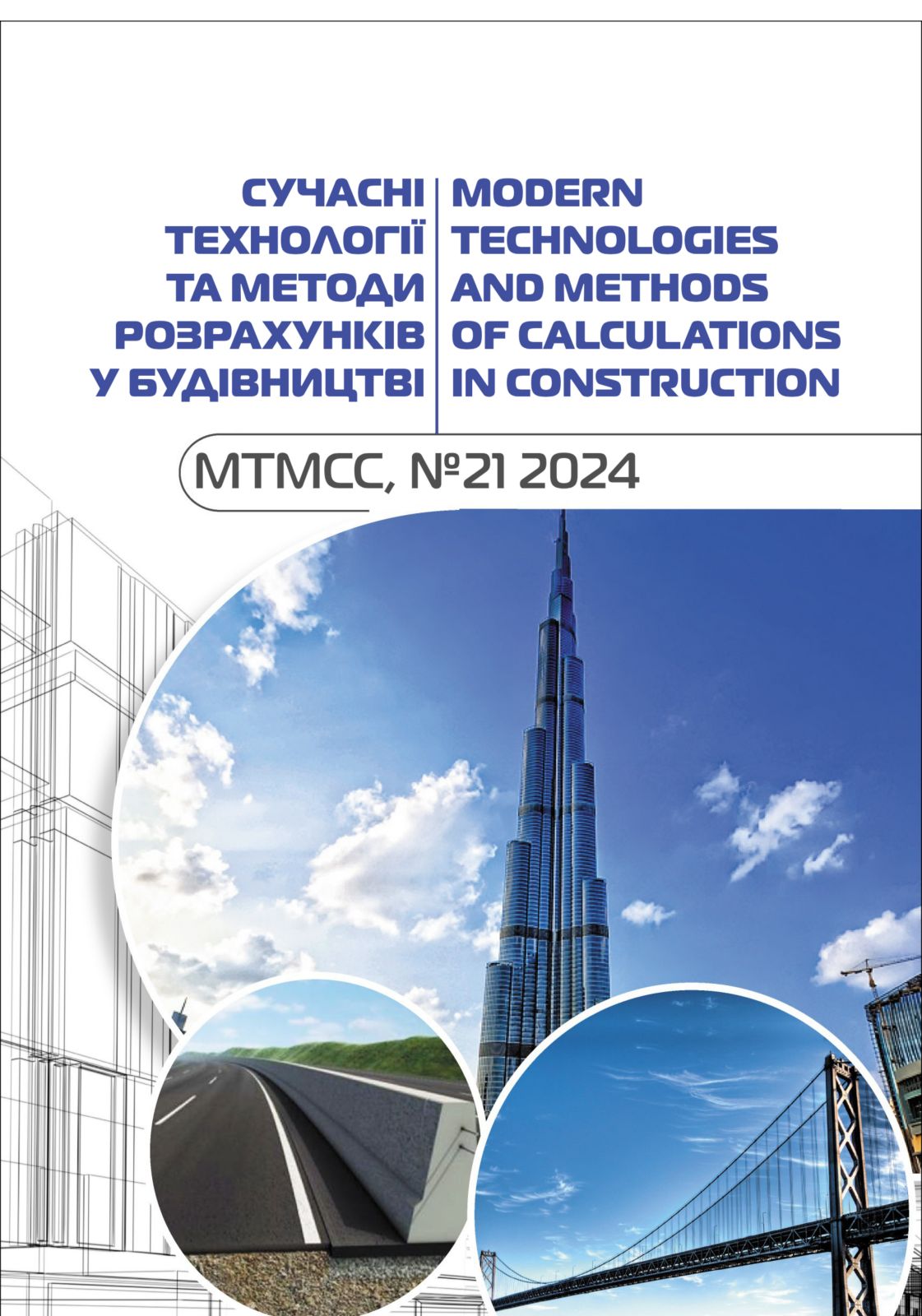Wind vortex shedding in tower buildings with solid-web cross-section
Abstract
Manifestation of wind action for tower structures that have close cross-section width and depth dimensions in plan. It manifests itself in the form of oscillations of the building in the direction perpendicular to the wind. Vortex shedding occurs under the action of successive disruption of vortices from the edges of the structure, which causes damping oscillations under the action of inertial masses with the natural frequency of oscillations of the structure in one of three forms of natural oscillations, depending on the frequency and critical speed. The paradox is that engineering practice in Ukraine was first required to perform calculations on vortex excitation with the introduction of change 2 to DBN B.1.2-2:2006 in 2020. and the phenomenon itself remains little known to the general public of design engineers. This article provides a brief history of the study of the issue of which calculation provisions and models are used in practice. The theory of the process and the method of calculation of structures for vortex shedding are represented, as well as the results of the calculation of four real structures. For these structures, the level of forces is determined and the regularities of the simultaneous consideration of forces from the action of frontal wind and vortex excitation are indicated. Additional questions that arise in the calculation and design of tower structures taking into account vortex shedding are identified, which require further research, in particular, to determine the parameters of the calculation of structures for endurance. It was found that the influence of vortex shedding increases with the height and mass of buildings. For tower structures with a height of up to 15 m, the vortex excitation gives insignificant forces, only up to 3..5% of the forces of the frontal wind, with an increase in height up to 50 m, the forces increase to 40..50%. When several factors coincide, the manifestation of vortex excitation in the second and third forms of natural frequencies is possible, which can cause resonant forces.








